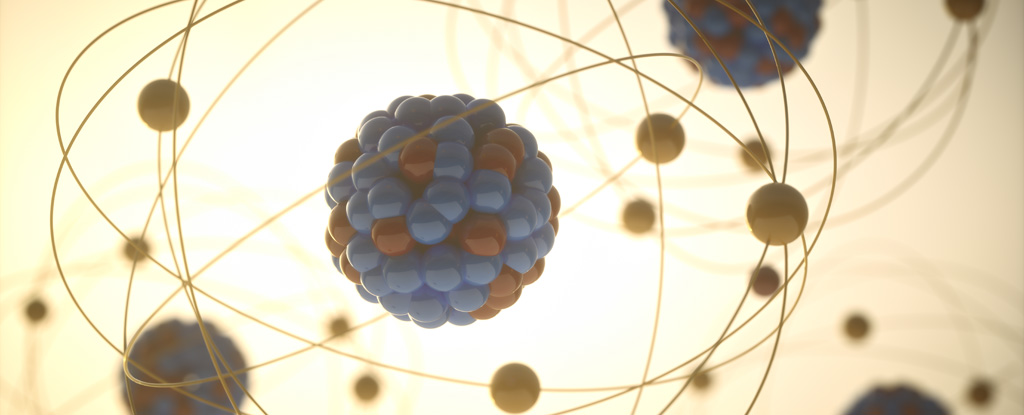Products You May Like
Protons may have more “charm” than we thought, new research suggests.
A proton is one of the subatomic particles that make up the nucleus of an atom. As small as protons are, they are composed of even tinier elementary particles known as quarks, which come in a variety of “flavors,” or types: up, down, strange, charm, bottom, and top.
Typically, a proton is thought to be made of two up quarks and one down quark. But a new study finds it’s more complicated than that.
Protons can also contain a charm quark, an elementary particle that’s 1.5 times the mass of the proton itself. Even weirder, when the proton does contain the charm quark, the heavy particle still only carries about half the proton’s mass.
The finding all comes down to the probabilistic world of quantum physics. Though the charm quark is heavy, the chance of it popping into existence in a proton is fairly small, so the high mass and small chance basically cancel each other out.
Put another way, the full mass of the charm quark doesn’t get taken up by the proton, even if the charm quark is there, Science News reported.
Though protons are fundamental to the structure of atoms – which make up all matter – they’re also very complicated.
Physicists don’t actually know protons’ fundamental structure. Quantum physics holds that beyond the up and down quarks known to be present, other quarks might pop into protons now and then, Stefano Forte, a physicist at the University of Milan, told the podcast Nature Briefing.
Forte was a co-author of the new paper showing evidence for the charm quark in protons, published in the journal Nature 17 Aug.
There are six types of quarks. Three are heavier than protons and three are lighter than protons. The charm quark is the lightest of the heavy batch, so researchers wanted to start with that one to find out whether a proton could contain a quark heavier than itself. They did this by taking a new approach to 35 years of particle-smashing data.
Related: Why physicists are interested in the mysterious quirks of the heftiest quark
To learn about the structure of subatomic and elementary particles, researchers fling particles against each other at blistering speeds at particle accelerators such as the Large Hadron Collider, the world’s largest atom smasher, located near Geneva.
Scientists with the nonprofit NNPDF collaboration gathered this particle-smashing data going back to the 1980s, including examples of experiments in which photons, electrons, muons, neutrinos, and even other protons were crashed into protons.
By looking at the debris from these collisions, researchers can reconstruct the original state of the particles.
In the new study, the scientists handed over all of this collision data to a machine-learning algorithm designed to look for patterns without any preconceived notions of how the structures might look.
The algorithm returned possible structures and the likelihood that they might actually exist.
The study found a “small but not negligible” chance of finding a charm quark, Forte told Nature Briefing. The level of evidence wasn’t high enough for the researchers to declare the undeniable discovery of the charm quark in protons, but the results are the “first solid evidence” that it can be there, Forte said.
The structure of the proton is important, Forte said, because to discover new elementary particles, physicists will have to uncover minuscule differences in what theories suggest and what’s actually observed. This requires extremely precise measurements of subatomic structures.
For now, physicists still need more data on the elusive “charm” within a proton. Future experiments, such as the planned Electron-Ion Collider at Brookhaven National Laboratory in Upton, New York, may help, Tim Hobbs, a theoretical physicist at Fermilab in Batavia, Illinois, told Science News.
Related content:
This article was originally published by Live Science. Read the original article here.
